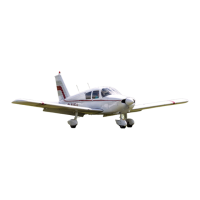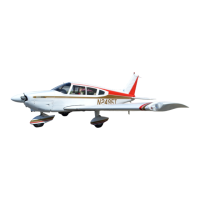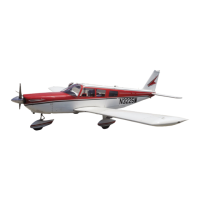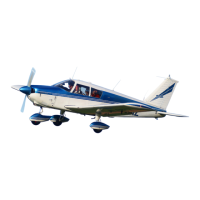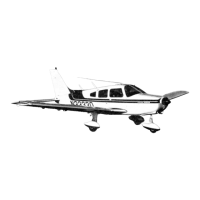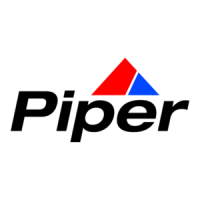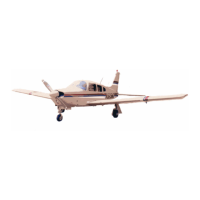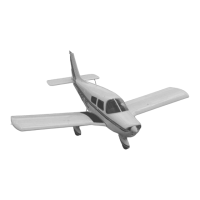•
SECTION III
THE PIPER CHEROKEE
THE PIPER CHEROKEE
SECTION III
4.
a. The landing gear shock struts are properly inflated.
(Refer to Section V)
b. The tires are satisfactorily inflated and not excessive-
ly worn.
5.
The cowling and inspection covers are secured.
The windshield is clean and free of defects.
The propeller is free of detrimental nicks.
There are no obvious fuel or oil leads.
The engine oil is at the proper level.
f. Drain the fuel strainer with the fuel selector valve in
left or right tank position.
6.
a. The tow-bar and control locks are detached and prop-
erly stowed.
7.
a. Upon entering the airplane, ascertain that all controls
operate properly.
b.
Close and secure the cabin door.
c.
Check that required papers are in order and in the
airplane.
d.
Fasten safety belts and shoulder harness. Check inertia reel.
STARTING
After completion of preflight inspection:
1.
Lock the wheel brakes.
2.
Set the carburetor heat control in the full "COLD"
position.
3.
Select the desired tank with the fuel valve.
4.
Move the mixture to the full "RICH" position.
5.
Open the throttle 1/8 to 1/4 inch.
6.
Turn the electric fuel pump "ON".
In cold weather (below 40 degrees F.) prime the engine
with one to three full strokes of the priming pump. If extremely
cold, starting will be aided by pulling the propeller through by
hand (switch "OFF") four to five revolutions. If the temper-
ature is above 40 degrees the engine may be primed by three
or four short quick strokes of the throttle.
After priming, turn the electric master switch on, engage
the starter and allow the engine to turn approximately one full
revolution, then turn the ignition switch to the
}
jell magneto
4
7
077f
14
730124
position.
When the engine is firing evenly, turn the magneto switch
to the "Both" position and advance the throttle to 800 RPM.
Check the oil pressure gauge for a pressure indication. If
oil pressure is not indicated within thirty seconds, stop the
engine and determine the trouble.
If the engine fails to start at the first attempt, another
attempt should be made without priming. If this fails, it is
possible that the
engine is overprimed. Turn the magneto
switch off, open the throttle slowly, and rotate the engine
approximately ten revolutions with the starter. Reprime the
engine with one half the amount used in the initial attempt,
turn the magneto switch to "Left", and repeat the starting
procedure. If the engine again fails to start, refer to the
Lycoming Operating Handbook, Section VII, Engine Troubles.
WARM-UP
As soon as the engine starts, the oil pressure should be
checked. If no pressure is indicated within thirty seconds,
stop the engine and determine the trouble. In cold weather it
will take a few seconds longer to get an oil pressure indication.
Warm-up the engine at 800 to 1200 RPM.
Take-off may be made as soon as ground check is com-
pleted, providing that the throttle may be opened fully without
back firing or skipping, and without reduction in engine oil
pressure.
a.
b.
c.
d.
e.
15
